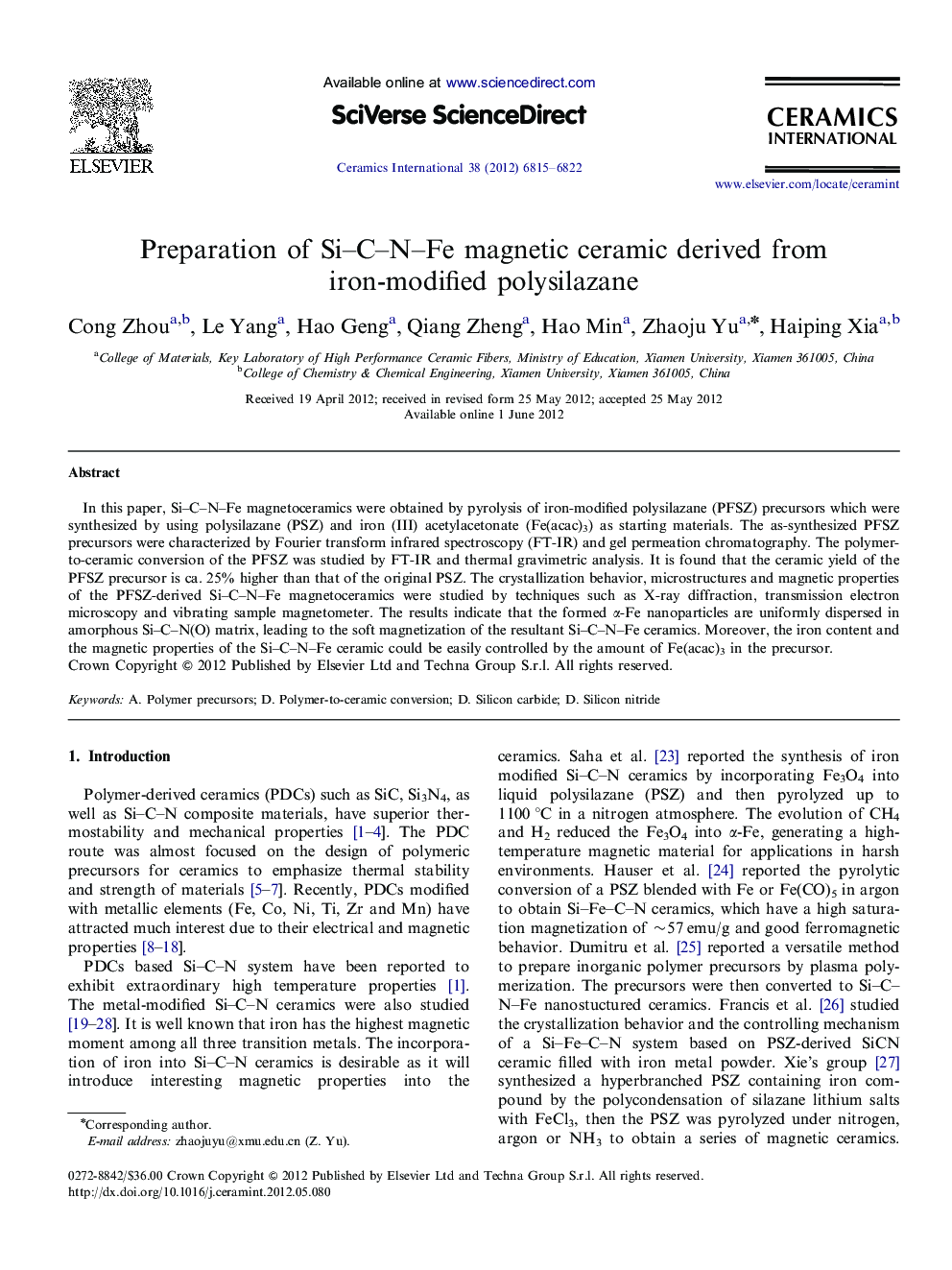| Article ID | Journal | Published Year | Pages | File Type |
|---|---|---|---|---|
| 1462461 | Ceramics International | 2012 | 8 Pages |
In this paper, Si–C–N–Fe magnetoceramics were obtained by pyrolysis of iron-modified polysilazane (PFSZ) precursors which were synthesized by using polysilazane (PSZ) and iron (III) acetylacetonate (Fe(acac)3) as starting materials. The as-synthesized PFSZ precursors were characterized by Fourier transform infrared spectroscopy (FT-IR) and gel permeation chromatography. The polymer-to-ceramic conversion of the PFSZ was studied by FT-IR and thermal gravimetric analysis. It is found that the ceramic yield of the PFSZ precursor is ca. 25% higher than that of the original PSZ. The crystallization behavior, microstructures and magnetic properties of the PFSZ-derived Si–C–N–Fe magnetoceramics were studied by techniques such as X-ray diffraction, transmission electron microscopy and vibrating sample magnetometer. The results indicate that the formed α-Fe nanoparticles are uniformly dispersed in amorphous Si–C–N(O) matrix, leading to the soft magnetization of the resultant Si–C–N–Fe ceramics. Moreover, the iron content and the magnetic properties of the Si–C–N–Fe ceramic could be easily controlled by the amount of Fe(acac)3 in the precursor.
